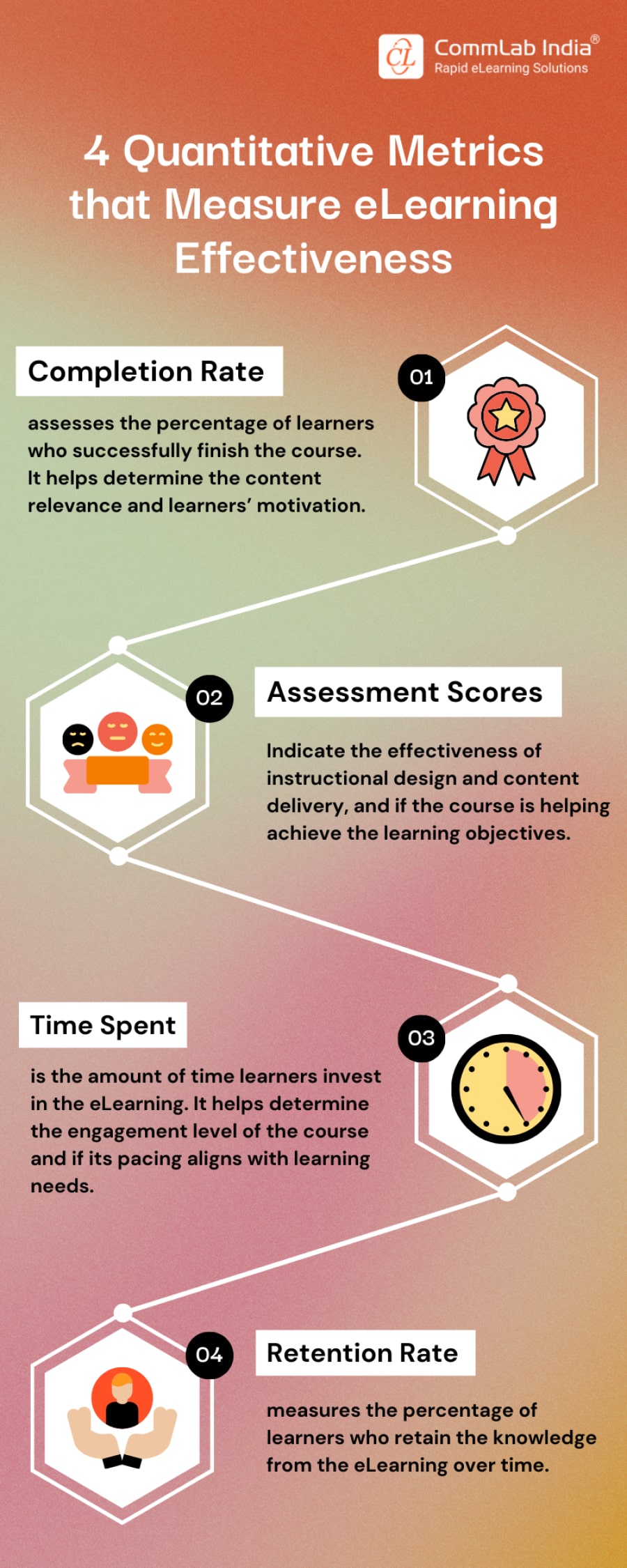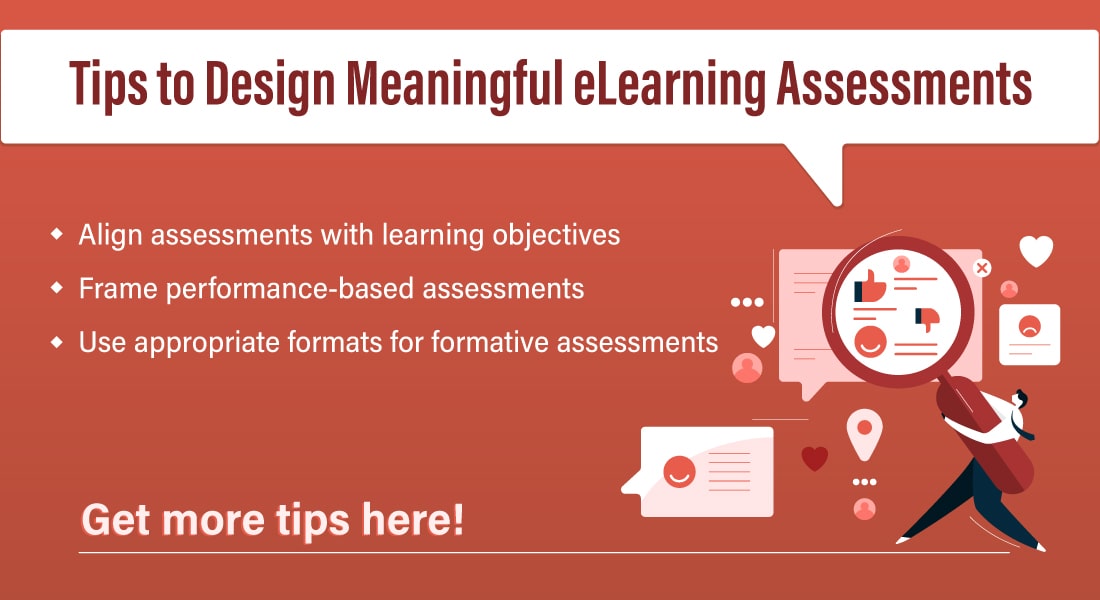4 Quantitative Metrics that Measure eLearning Effectiveness [Infographic]
![4 Quantitative Metrics that Measure eLearning Effectiveness [Infographic] 4 Quantitative Metrics that Measure eLearning Effectiveness [Infographic]](https://blog.commlabindia.com/hubfs/blogs/quantitative-metrics-measure-elearning-effectiveness-info.jpg)
In today's competitive business environment, employee development is a critical investment. Companies are pouring resources into training programs, but a crucial question remains: Is this training actually improving performance and achieving our goals?
Simply delivering a training session isn't enough. To ensure your investment is paying off, you need to measure learning effectiveness. This blog post will delve into the key metrics you can use to track the impact of your training programs. By understanding these metrics, you can gain valuable insights into how well your training programs are meeting your needs and identify areas for improvement. Let's dive in and ensure your training programs are a springboard for success, not a missed opportunity.
But first…
Why Is It Important to Assess Learning Effectiveness?
Assessing learning effectiveness in corporate training is crucial for several reasons:
Helps Improve Training ROI (Return On Investment)
Companies invest significant resources in training their employees. By assessing effectiveness, you can ensure the training is actually improving skills and knowledge, leading to a better training ROI. This can be measured through metrics like increased productivity or reduced errors.
→ Download Now: Instructional Design Strategies to Design Engaging eLearning Courses
Enables Targeted Improvements
Evaluating the eLearning effectiveness helps identify areas where training falls short. Are there knowledge gaps? Is the delivery method ineffective? This allows you to target improvements and make the training more impactful for future learners.
Boosts Employee Engagement and Retention
It is crucial that the training programs empower learners and make them feel valued. However, not all courses succeed in achieving this. Therefore, measuring the eLearning effectiveness offers you insight into learner engagement and helps ensure that the training is relevant and impactful. This leads to higher employee satisfaction and reduces turnover.
Aligns Training with Business Goals
Training courses should be designed in a manner that helps achieve specific business goals. To ensure so, assessing the effectiveness of your eLearning comes in handy. You can analyze whether the training is actually moving the needle on those goals or whether you need to make amends to drive success.
Ensures Accountability
Assessing the effectiveness of eLearning fosters accountability. It holds everyone accountable for their roles and responsibilities, trainers for delivering programs and employees for actively participating and learning.
4 Quantitative Metrics that Measure eLearning Effectiveness
Summing It Up!
Assessing learning effectiveness allows you to optimize your training programs, ensuring they are a strategic investment that benefits both your employees and your bottom line. Now that you understand the importance of assessing effectiveness of eLearning and know the quantitative metrics to measure eLearning effectiveness, you can put your best foot forward to ensure high-quality, impactful training programs. To level up the effectiveness of your eLearning, designing engaging courses also holds an integral position. Learn about the top-notch instructional design strategies to design creative, engaging eLearning courses in the eBook below.





![4 Questions on Performance-based eLearning Assessments Answered! [Infographic]](https://blog.commlabindia.com/hubfs/Imported_Blog_Media/elearning-assessment-design-considerations-1.jpg)

